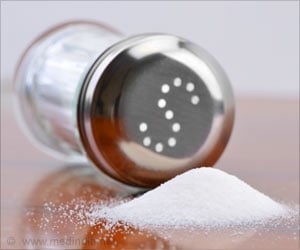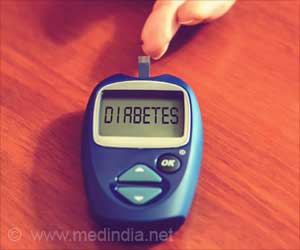Panzier collected $300 million to advance research and treatment of the disease and Damiano created bionic pancreas a personalized diabetes management device.

"It took us a few weeks to get our legs back under us" after his wife, a registered dietitian, and Panzirer heard the news. “The ensuing nights were filled with screaming and crying ordeals over insulin shots,” he said.
"It's devastating news, and it breaks my heart every time I walk into the room and deliver this message," said Dr. Preneet C. Brar, a pediatric endocrinologist in the Department of Pediatrics at NYU Langone Medical Center.
Diabetes results from defects in insulin production which is characterized by high levels of blood glucose. But only 5% to 10% of people with diabetes have Type 1, which develops when the body's immune system destroys pancreatic beta cells, the only cells that produce insulin.
Type 1 diabetes (also known as T1D) previously known as juvenile diabetes is usually diagnosed in children and young adults.
"It changes their life forever in a certain way," said Brar. "It is a difficult disease to take care of. Being a parent myself and knowing the nuances of the disease, I can't even fathom how I would react to it."
Advertisement
"I kind of fell into the best job in the world," said Panzirer. "I get the opportunity to impact my child's disease ... with the understanding I have a much bigger responsibility."
Advertisement
"It makes me tremendously proud to know that our T1D program exists for just one reason: To have a positive impact on those living with T1D," said Panzirer. "Working with industry, researchers, physicians, regulators and other funders, we aim to leverage the best minds and efforts across all disciplines, and we don't care who has the answer," he added.
One of those researchers is Ed Damiano. Like Panzirer, his life's work in T1D research at Boston University was inspired by his family being transformed by the disease after his son's diagnosis.
When Damiano's son David was 11 months old, he started "backpedaling" in development, said his father, and suddenly started heavy diapers and was showing erratic behavior. Within hours of taking him to the hospital one night, the infant had a blood sugar level of 800, said Damiano, which is eight times the normal.
"I remember that first night not knowing what we had in store for us," said Damiano. "We were checking his blood sugar 15 times a day when he was a baby," he said of the "roller coaster" that ensued over the next few months.
“The delicate balancing act over blood sugar was particularly difficult to achieve,” said Damiano. The researcher, as a result, started looking for ways his engineering background could translate to the regulation of blood sugar.
"I thought 'I don't have the skill set to find a cure,' " said Damiano. But the same skills that engineers used to solve other problems could be used to control glucose, he said.
Damiano has been committed to creating blood-glucose control technologies, since that diagnosis. He's part of the Bionic Pancreas Team, a collaborative from Boston University and Massachusetts General Hospital working together to develop a bionic pancreas to automatically make decisions about insulin and glucagon dosing.
According to Domino, such technology could buy time for a cure. He has been focused to send his son to college without the burden of constantly checking his insulin levels.
His latest prototype was introduced in July at Friends for Life conference in Orlando. Called the iLet. “This 'bionic pancreas' device is a personalized diabetes management tool that automatically learns insulin requirements and manages diabetes, with a built-in, continuous glucose monitor. It's sophisticated and relentless like diabetes is relentless," said Damiano, adding "Diabetes never takes a break." The iLet is not FDA-approved yet, but the goal is to begin clinical trials later in 2016.
The numbers of Americans living with diabetes continues to rise, as these two dads further their efforts in the field. There are now more than 29 million adults living with the disease, according to 2014 data released by Centers for Disease Control and Prevention.
That's an increase of 3 million people since the CDC released its last statistics on the disease in 2011. It also represents $245 billion in health care costs, according to 2012 data from the American Diabetes Association, a 41% increase from the $174 billion spent in 2007.
The commitment of leaders such as Panzirer and Damiano becomes particularly significant with those statistics in mind, according to Dr. Judith Fradkin, director of the Division of Diabetes, Endocrinology and Metabolic Diseases at the NIH's National Institute of Diabetes and Digestive and Kidney Diseases. The National Institutes of Health oversees the Type 1 Diabetes Special Statutory Funding Program, a special appropriation from Congress, and Damiano is also a NIH grantee. "It makes it very personal," Fradkin said. "The dedication they bring to the field is really fantastic."
Source-Medindia















